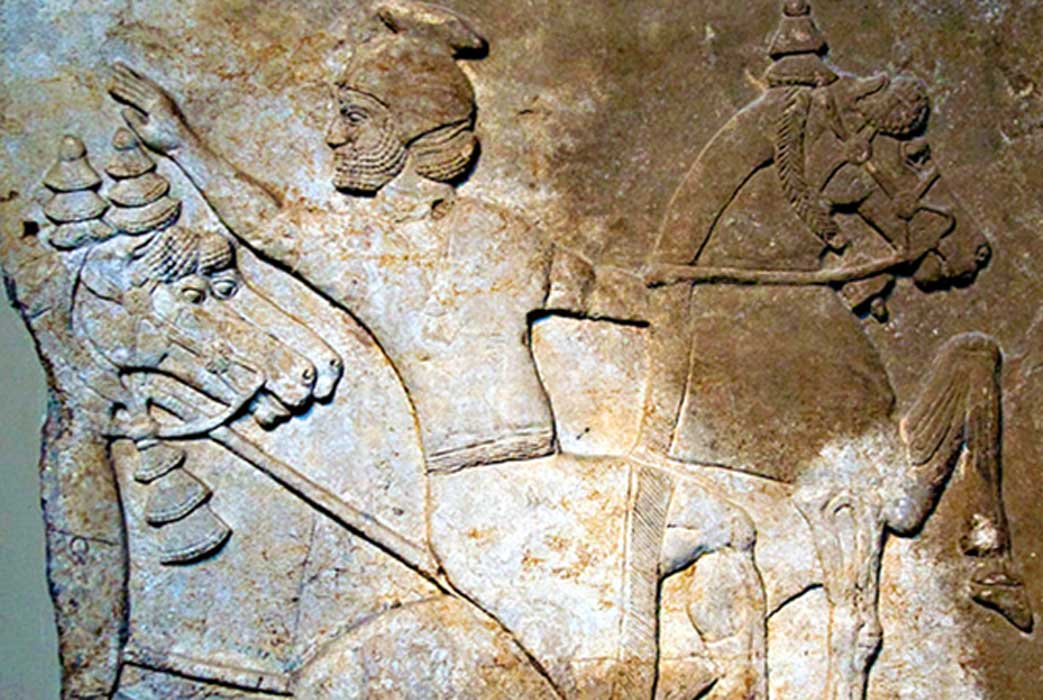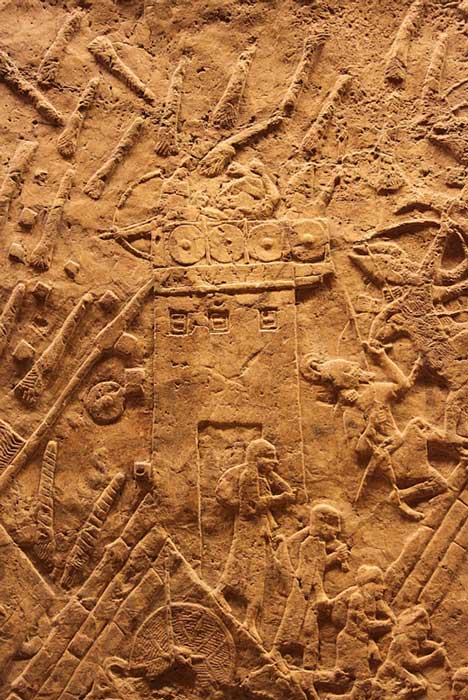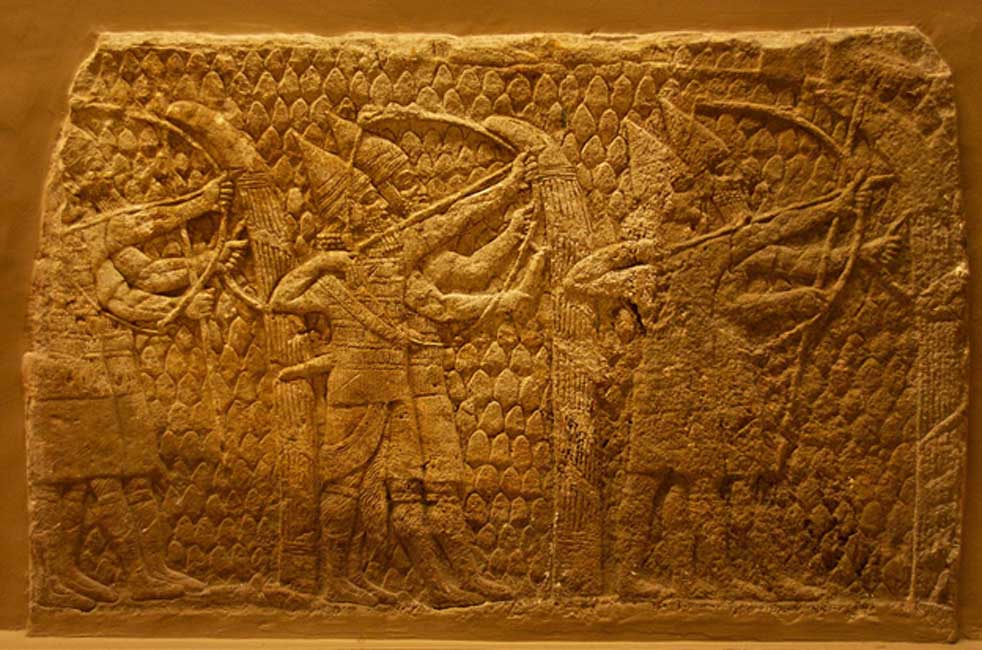
The Iron Army: Assyria - Deadly and Effective Siege Machine - Part II
While the ram attempted to smash and loosen the rocky walls, Assyrian assault teams with scaling ladders would try to breach walls. The ram, while effective, was also vulnerable to enemy defenders dropping chains to pull the battering pole aside. Because of this issue, the Assyrians deployed men who counter this by hooking the chains with iron grapples. The prophet Joel gives a description of the Assyrian wall scaling:
“They rush upon the city;
they run along the wall.
They climb into the houses;
like thieves they enter through the windows.”
Joel’s description is quite accurate. Besides reliance on battering rams to bring down the walls, they also looked to sappers.
Undermining Fortifications
Assyrian sappers (soldiers for building, demolitions, general construction) would approach the walls possibly under the cover of shield bears, the same type that protected the archers one could suspect. If they had no such protection, the Assyrian king made sure his specialized troop had the armor needed to get the job done. The sapper, particularly during the rule of Ashurnasirpal (883-859 BCE), were heavily armored and wore long padded mailed coverings along with a conical helmet with mail protecting the face and neck. Once at the walls, they would aid in helping the battering rams dislodge blocks from the wall with special flat-topped crowbars, pick axes, hoes, and drills. If the sappers could not get near the walls, they tunneled under them and prop it up with wooden supports until the hole was rather large and deep, after which they would set fire to the structure causing the foundation to weaken and collapse.
- The Military Campaigns of Tiglath-pileser III: Priest King and Conqueror – Part 1
- A Tale of Pestilence: Did Egypt Wield a Secret Weapon against the Assyrians?
- The Powerful Assyrians, Rulers of Empires
While the battering ram was effective, the Assyrians had a backup plan usually underway during the siege to aid the army if the rams failed to dislodge the walls, and that was siege towers. As these siege towers are pushed forward, archers would accompany them with the duty to pick off any enemy foe threatening to toss an incendiary weapon at the tower. Furthermore, the Assyrians placed hoses on the tower from which water poured over the leather sheets covering the wooden structure to prevent the tower from catching fire. If the water hoses failed and fire did catch, a man holding a large ladle with would extinguish the flames the best he could.

Siege Tower on the Lachish, Relief in the British Museum. (CC BY-SA 3.0)
If the battering rams breached the walls, the Assyrian infantry behind the rams would pour through the hole under the cover of their archers and slingers. The Assyrian infantry were heavy spearmen armed with long, double-bladed spears, straight swords for close combat and they carried a small shield. The armor worn by the infantryman was a conical helmet, a knee-length coat of iron mail which was lined with wool to absorb the blows from weapons and allowed heat to dissipate. To protect his legs, he wore knee-high leather boots that had iron plates attached to the shins.





